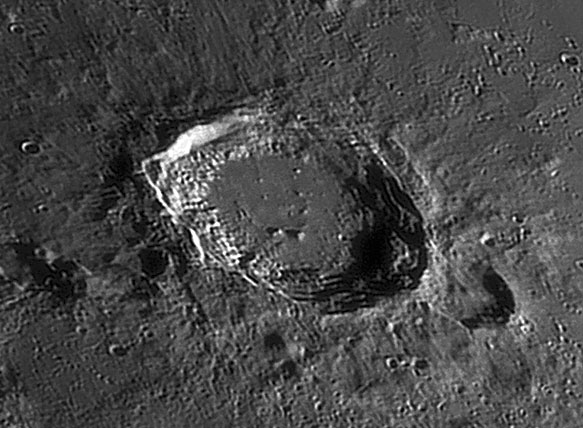February 6, 2005
Alexander's Teacher
Image Credit: Paolo R. Lazzarotti |
|
Alexander's Teacher Aristotle (or Aristoteles) was one of the world's great thinkers and the tutor of Alexander the Great. Somehow Alexander ended up with a derelict lunar crater named in his honor, while the name of his teacher adorns this splendid if slightly unusual crater. With a diameter of 87 km Aristoteles is only 2 km wider than Tycho, but its depth of 3.5 km is 1100 m shallower. This shallowness is consistent with the broad and relatively smooth floor with only a few small hills rather than massive central peaks. But what fills the crater? The floor doesn't have the darkness at full Moon of mare lavas, and 1100 m of impact melt is much more than predicted by theory and experiments. The wall of Aristoteles varies from place to place. In the south it exhibits a classic set of five or so terraces that step down all the way to the floor. On the west (left) there is a single large scarp and a jumble of hills, really mountains, below. The eastern wall is obviously affected by the overlapped crater Mitchell. Often recent craters cleanly cut through pre-existing ones but not this time. Secondary craters and ridges of ejecta radiate from Aristoteles, showing that it is young enough for them not to have been removed by later meteoritc bombardment, but the lack of rays suggests that the crater is not Copernican in age - it's older than 1 billion years. Technical Details: Related Links: Yesterday's LPOD: Ina Imaged! Tomorrow's LPOD: Rings Within Rings |
|
Author & Editor: |
COMMENTS?
Register, Log in, and join in the comments.




